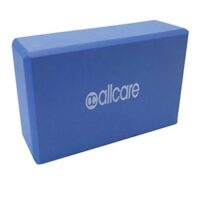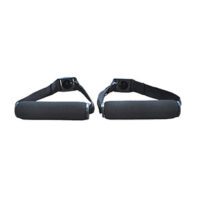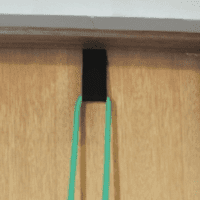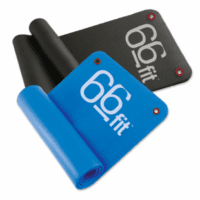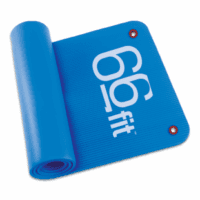Tennis Injuries
Article by John Miller

Tennis Injuries
Introduction
Participating in tennis is a fantastic way to stay fit while enjoying a challenging yet social sport. With over 1.2 million Australians playing tennis each year, it’s clear that the sport has become a favourite for its ability to combine agility, strength, and strategy. However, with all the joy comes the risk of injury. According to studies, approximately 5 out of every 1,000 hours of play results in an injury, making injury prevention essential for players of all skill levels.
Common Injuries in Tennis
Tennis players are prone to a variety of injuries due to the physical demands of the game. The most frequent injuries include ankle sprains, tennis elbow, rotator cuff tears, and wrist sprains. Repetitive arm movements, quick sprints, and sudden pivots are often to blame for these common injuries. Studies show that lower limb injuries account for nearly 40% of tennis injuries, while upper limb injuries make up around 30%.
Read more: Tennis Elbow | Rotator Cuff Injury | Ankle Sprains | Wrist Sprains
Causes of Tennis Injuries
Several risk factors contribute to the likelihood of injury in tennis. Poor technique, such as improper footwork, can lead to ankle sprains, while inadequate warm-ups increase the risk of muscle strains. The quick changes in direction required in tennis, combined with overuse from repetitive movements, are common causes of both acute and chronic injuries.
Read more: Injury Prevention Tips
Injury Prevention Strategies
Reducing the risk of tennis injuries involves incorporating strength and flexibility training, choosing the right equipment, and using proper technique. Warming up with dynamic stretches and cooling down with static stretches can prevent muscle strains and sprains. Players should also ensure their shoes provide enough support for the sport’s multidirectional nature.
Read more: Stretching Guidelines
Rehabilitation and Recovery
For injuries such as tennis elbow or Achilles tendon ruptures, treatment may range from rest and physiotherapy to more advanced options like surgery. Physiotherapists often use exercise programs and manual therapy to help players recover and safely return to the court. The rehabilitation process focuses on strengthening muscles and improving flexibility to prevent re-injury.
Read more: Tennis Elbow Treatment | Achilles Tendon Rupture
Role of Physiotherapy in Managing Tennis Injuries
Physiotherapy plays a crucial role in both preventing and treating tennis injuries. Techniques like manual therapy, targeted exercise programs, and biomechanical assessments are effective for injury recovery. Physiotherapists also assess movement patterns and equipment choices to reduce future injury risks.
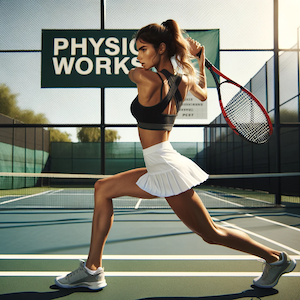
Long-term Impact of Sports Injuries
Untreated or recurring injuries can lead to long-term issues like chronic pain, stiffness, or reduced mobility. Managing injuries correctly with physiotherapy and ongoing care helps minimise the risk of long-term consequences and ensures better outcomes for active players.
Read more: Chronic Pain Management
Psychological Impact of Injuries
Dealing with an injury can be mentally tough for athletes. Feelings of frustration, anxiety about re-injury, and impatience during recovery are common. However, staying focused on rehabilitation goals and seeking mental health support can help athletes maintain a positive mindset.
Nutritional and Conditioning Support
A balanced diet and proper conditioning are vital for tennis players. Nutrition plays a key role in recovery by providing the body with essential nutrients to repair tissues and maintain peak performance. Conditioning exercises improve strength, flexibility, and endurance, reducing the overall risk of injury.
What to Do Next?
If you’re experiencing any of these injuries or suspect you might be at risk, it’s crucial to seek professional advice promptly. Consult with your physiotherapist or doctor to receive a personalised treatment plan that will help you recover effectively and return to the court safely. Early intervention can prevent minor issues from escalating into chronic problems, ensuring you stay active and continue enjoying tennis without prolonged interruptions.
Conclusion: Embrace the Game Safely
Tennis is a sport that combines fun with fitness but requires awareness and precaution to prevent injuries. Regular consultation with a physiotherapist can guide you in equipment choice, technique refinement, and injury prevention strategies. Remember, the best way to enjoy tennis is to play it safely and smartly. So, whether you’re a seasoned player or just starting, always seek the advice of a physiotherapist to stay at the top of your game.
Rochedale - Call 38410277
Book Online: RochedaleSalisbury - Call 32751044
Book Online: SalisburySandgate - Call 32691122
Book Online: SandgateTennis Injury FAQs
- What is the most common injury in tennis? Tennis elbow is commonly associated with the sport, but ankle sprains and knee injuries are also frequent due to sudden changes in direction.
- How can I prevent tennis injuries? A good warm-up, proper footwear, and strengthening exercises can help reduce the risk of injury.
- Why do I get tennis elbow? Repetitive arm movements like racquet swinging strain the tendons in your elbow, leading to tennis elbow.
- What should I do if I get injured playing tennis? Rest, apply ice, and consult a physiotherapist for a recovery plan tailored to your injury.
- Can physiotherapy help with tennis injuries? Yes, physiotherapy can aid recovery through manual therapy, strengthening exercises, and injury assessment.
- How long does it take to recover from tennis elbow? Recovery time varies, but physiotherapy can reduce recovery time by focusing on strengthening and flexibility.
- What causes shoulder injuries in tennis? Repetitive overhead movements during serves can strain the shoulder muscles, leading to rotator cuff injuries.
- Are ankle sprains common in tennis? Yes, the sudden stops and changes in direction often lead to ankle sprains.
- What role does equipment play in preventing injuries? Choosing the right racquet, strings, and shoes can reduce stress on your joints and muscles, preventing injury.
- Can previous injuries make me more likely to get injured again? Yes, prior injuries can increase the risk of re-injury, but proper care and physiotherapy can minimise this.
Related Articles
- Tennis Elbow: Causes and Treatment Learn about the causes and treatments for tennis elbow, including physiotherapy options.
- Rotator Cuff Injuries: How to Treat Them Discover treatment options for rotator cuff injuries, from rest to physiotherapy exercises.
- Stretching Guidelines for Injury Prevention Get tips on the best stretching routines to prevent injuries and stay limber.
- Ankle Sprain Treatment and Recovery Understand the steps to treat and recover from ankle sprains effectively.
- Chronic Pain Management in Sports Learn strategies to manage chronic pain resulting from sports injuries.
- Injury Prevention Tips for Athletes Discover comprehensive tips to prevent injuries and maintain peak performance.
- Nutrition and Sports Performance Explore how proper nutrition supports recovery and enhances athletic performance.
- Psychological Strategies in Sports Understand the mental aspects of injury recovery and how to maintain a positive mindset.
Social Media – Follow Us for Free Tips
Stay updated with the latest tips and advice on preventing and managing tennis injuries by following us on our social media platforms. Gain access to professional insights, training routines, and motivational content to help you stay at the top of your game.














